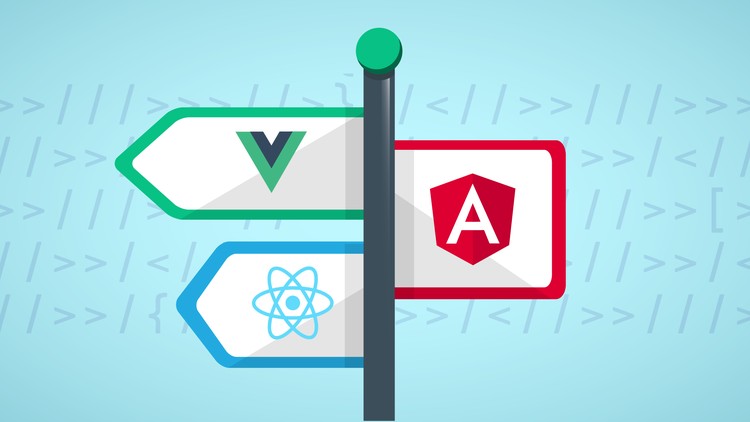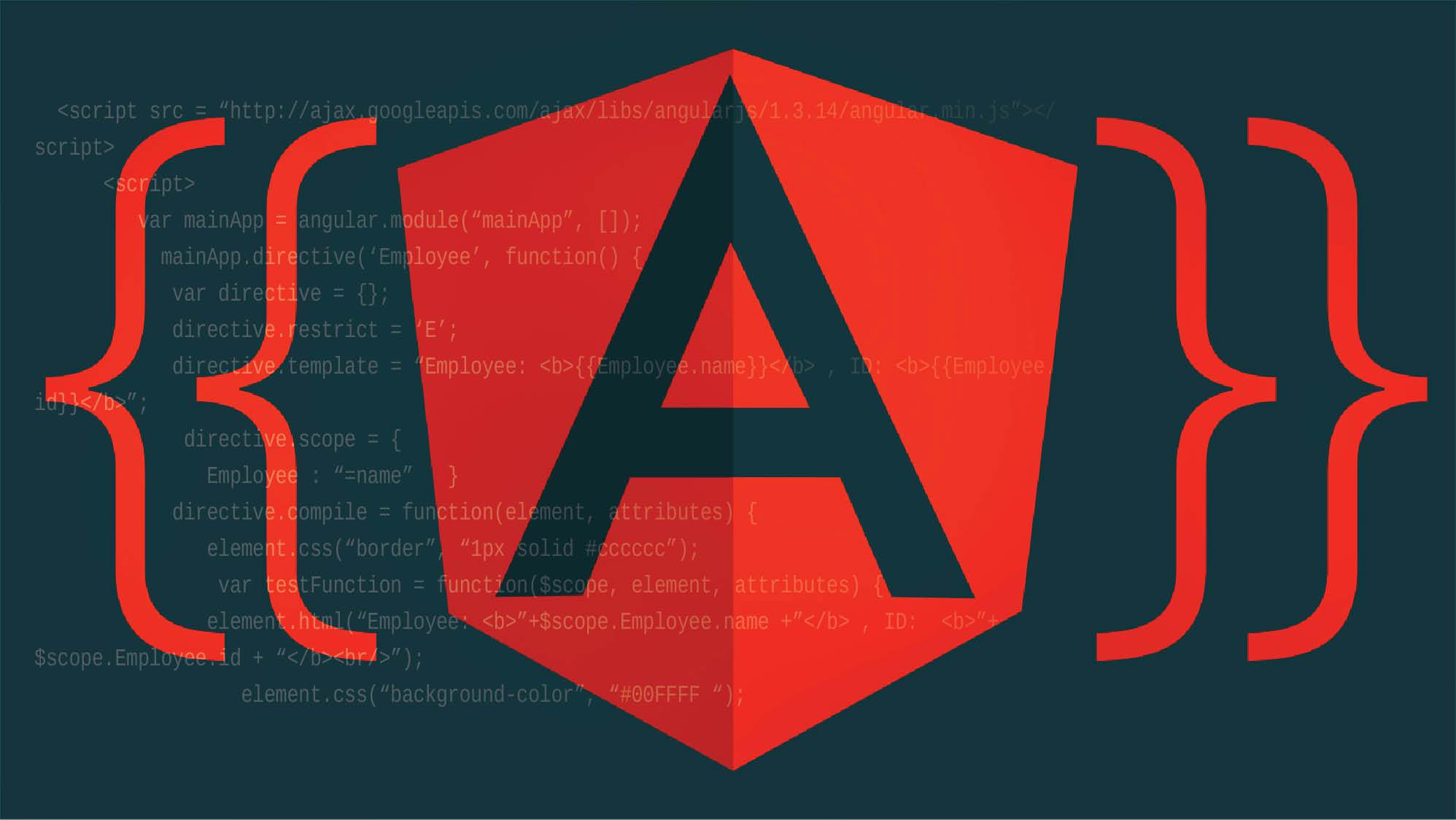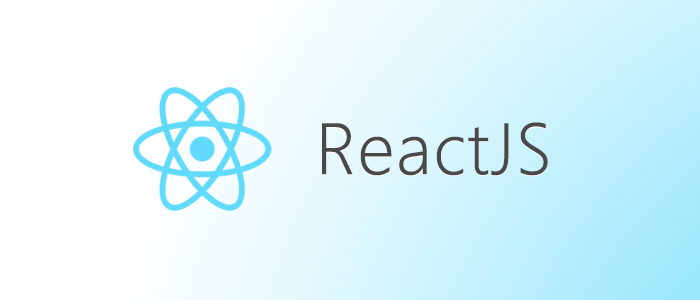React JS vs Angular JS vs Vue JS – Which is best for your Website in 2018
Choosing the right technology stack is one of the most important steps in every development process. It influences almost everything: the speed, and therefore the cost of development, the compatibility with other technologies, the speed and performance of the app itself, and so on.The variety of technologies is enormous. We are starting with frontend frameworks since they are responsible for what users see in their browser. Today, We will see the trio of “React JS vs Angular JS vs Vue JS” to help you figure out the most desirable technology for your Website.

Before we begin with the detailed in an outs of each framework let me clear couple of FAQ regarding the Front End Development.
Why do we need a Framework in the very first place?
A little bit of theory first. In web development, we always differentiate between frontend and backend.
The frontend is the part of the website that the user sees in his browser. The backend, accordingly, is the part that stays behind the scenes and is usually responsible for the business logic of the web app.
A frontend consists of three very important elements:
HTML: Builds the structure of the web page;
CSS: Formats the appearance of the structural elements;
JavaScript: A programming language that describes the functionality and is responsible for all the dynamic elements on the web page.
Technically, all the three elements of a frontend are just lines of code that are then rendered by the browser to display a beautiful web page. Developers spend many hours writing code to make your website look great. But there are helpers that can reduce the amount of code required and optimize the development process in general. The result is a reduction in development time and cost to bring the product to the market. These helpers are called frameworks.
According to Wikipedia, a “software framework is a universal, reusable software environment that provides particular functionality as part of a larger software platform to facilitate the development of software applications, products, and solutions. Software frameworks may include support programs, compilers, code libraries, toolsets, and application programming interfaces (APIs) that bring together all the different components to enable development of a project or system.”
A software framework includes standardized pre-written code, which makes the development of certain functionality easier and faster.
Selecting a frontend framework isn’t easy. There are so many things to consider, with many advantages and disadvantages to compare, and so many issues to discuss! To make your decision, we have prepared a detailed comparison of three major JavaScript frameworks. After reading this article, your choice will certainly be easier!
JavaScript frontend frameworks
Why JavaScript? This is one of the most popular programming languages worldwide and the most widespread technology for building web interfaces.
Generally, it is possible to write the frontend code in any programming language, however, this code should be converted into JavaScript as the browsers can only execute JS. Therefore, JavaScript is the optimal choice for frontend development.
There are many JavaScript frameworks which make the client-side development easier and faster. We are going to describe three of the most popular and best-performing frameworks, which we often use in our projects. Here we go with a head to head battle of React JS vs Angular JS vs Vue JS.
1.React JS
Pros:
1. Easy to Learn, Easy to Use
Being able to do awesome things is great, but only if you don’t have to spend the rest of your life becoming proficient in a new technology. React is easy to learn and easy to use and comes with a good supply of documentation, tutorials and training resources. Anyone who comes from a JavaScript background can understand and start using React in a few days. This makes all the great things it does even greater because you can actually use them in short order.
Granted, that comes partly because it’s a very focused solution. It’s the V in the MVC – the view part. It is generally referred to as “one of the JavaScript frameworks”, but many would argue that it is not a real framework but rather just an open-source UI library. Of course, not everyone needs a full-blown framework solution, and React provides a lot of value to the right audience. And even if you do, there are other ways to fill in the rest of the MVC model.
If you want more support, there are many training options including formal classes and informal tutorials. There are a large number of books, including several O’Reilly books, and over 250 books about React listed on Amazon. Finally, there are over 64,000 questions tagged with “reactjs” on Stackoverflow, so there is no shortage of answers, suggestions and examples available to help you with your project.
2. Reusable Components
Components are wonderful and React is based on them. You start with small things, which you use to build bigger things, which you use to build apps. Each component has its own logic and controls its own rendering, and can be reused wherever you need them. Code re-use helps make your apps easier to develop and easier to maintain. They also help you implement a consistent look and feel across the whole project. This may be a short description, but using components provides a large advantage in your development efforts.
3. The Virtual DOM
One of the really cool parts of React is the virtual DOM. Normally, when you develop an app that has a lot of user interaction and data updates, you have to carefully consider how your app structure is going to impact performance. Even with fast client platforms and JavaScript engines, extensive DOM manipulation can be a performance bottle-neck and even result in an annoying user experience. Worse, because the DOM is tree-structured, simple changes at the top level can cause huge ripples to the user interface.
React solves this by using a virtual DOM. This is, as the name implies, a virtual representation of the DOM. Any new view changes are first performed on the virtual DOM, which lives in memory and not on your screen. An efficient algorithm then determines the changes made to the virtual DOM to identify the changes that need to be made to the real DOM. It then determines the most effective way to make these changes and then applies only those changes to the real DOM. This guarantees a minimum update time to the real DOM, providing higher performance and a cleaner user experience all around.
The actual process is a bit more complicated than that and you can read more about how React identifies the changes made to the virtual DOM and creates the list of changes that need to be made to the actual DOM. For more information, read the page on Reconciliation on the React website.
4. Great Developer Tools
New technologies can be fun, but only if you can actually use them in a development environment. That means having tools to help you design and debug the new technology, and React is well covered in terms of design and debugging tools. React Developer Tools, available for Chrome and Firefox, is a browser extension for React. It allows you to inspect the React component hierarchies in the virtual DOM. You can select individual components and examine and edit their current properties and state. You can also track the hierarchy of any component and discover both parent and child components. You can find them on Github, in the Chrome store, or the Firefox add-ons page.
Cons
1. Less Smooth Navigation
React Native still lacks navigation components to provide users with seamless UX. There is no ideal solution in RN for navigation between displays. It will be getting better and better, but probably it will never be as good and smooth as native navigation.
2. Lack of Some Custom Modules
Despite its maturity, React Native still lacks some components. Others, in turn, are underdeveloped. The chances are you won’t have a problem with that, as the majority of custom modules you need are available, well-documented and working properly. However, it may happen that you will have to build your solution from scratch or try to hack the existing one.
3. Native Developers Still Needed
Implementing some native features and modules necessitates detailed knowledge of a particular platform. React Native does offer custom modules that you can refactor across operating systems, but things such as access to device sensors, camera or push-notifications require help from iOS and Android developers. Their input depends on the complexity of your project, but you need to bargain for them when kicking off with React Native.
4. Facebook Rules
Facebook puts a lot of resources to ensure React Native’s reliability and also to guarantee a constant development of the platform. It is unlikely that Facebook kills the framework overnight. But you still operate on Facebook’s license and, at the end of the day, you’re always dependent on them. Finally, Facebook has a right to revoke the licence (BSD) to use React and React Native if you get into a patent-related dispute with them.
Top 10 React JS Developers
Angular JS

Pros:
The framework does the following elegantly and efficiently:
1. DOM Manipulation and Data binding
It has two way data binding and automated DOM manipulation, so the updation from model to view and back again is leaner and faster and more importantly: no longer your headache.
2. Testing and Maintenance
If you are like me and almost neurotic about debugging, Angular is your best friend. The thorough refactoring and debugging properties make management and maintenance a cake walk. The framework encourages unit and end-to-end testing on every major change you make with tools like Karma and Protractor and the dependency injections make life so much easier than the unpardonable mess of main().
3. Separation of Concerns and cleaner development
Focus on one problem at a time with the beautifully logical MVVW model you’ll be developing in. With the clear division of data (model), design (ViewModel), and logic (controller) that binds the two, I’ve found it makes collaboration so much easier and development faster and cleaner.
4. Deep Linking module for bookmarking in SPA
A conversation about JavaScript is incomplete without AJAX, especially if you need to develop SPA (Single Page Application). Angular understands that and more.
The ngRoute module that requires angular-route.js to work makes deep linking and bookmarking in a single-page app simple. You can declare inline validation rules without actually writing JavaScript.
5. The Filters
It’s easy to combine Angular with other awesome tools for truly great results.
For example, we like working with the WordPress API. Once you get JSON files of your data, that is, the posts, users, tags, etc. from a WordPress website, you can put them through Angular to give the website front-end a super-speedy and stunning revamp by rewriting the client-side JavaScript through AngularJS. Takes a bit of know-how, but you’ll love the results.
The know-how is a bit of sore-spot. And that’s where the fun ends and fumbling begins.
Cons:
1. Learning Curve
Every single article about AngularJS pros and cons has this one mentioned, and it’s true. But I’ll be honest; this hype about difficulty learning AngularJS is simply hype: the framework looks more intimidating that it is. The framework has a very weird learning curve, as summed up in a post and accompanying graph by Ben Nadel.
It’s not just Nadel. Any Angular aficionado will tell you that this is almost exactly what they felt when taking up the framework. The learning curve is actually weirder than straight-up difficult and has more ups and downs than the lead character’s life in a melodrama.
2. Documentation
Some developers think Angular has insufficient documentation that doesn’t do a good enough job of covering all aspects of this framework. That may be true, but since the community is still experimenting and there is nothing like an official set of ‘rules’, those who rigidly follow the system find it difficult to work with.
It should also be noted that documentation has improved with the contribution of Angular community.
3. Scopes
Debugging scopes can be a huge problem in an otherwise amazing framework like Angular. The scopes (evaluating expression like JS does with window) are nested in structure and placed hierarchically, and visualizing them for debugging can be somewhat difficult.
Top10 Angular JS Developer
Vue JS
Pros
1.Small Size
One of the most significant features is its small size. Vue.js weighs only 18kb after gzipping. However, it should be noted that the Vue.js ecosystem is also small and fast.With Vue.js users can separate the template-to-virtual-DOM compiler and even the run time. Despite it’s small size Vue.js consistently outperforms bulky frameworks such as AngularJS and Ember JS.
2.Ease of understanding and development
The advantage with Vue.js is that it enables development of large scale templates. Which not only makes it easier for programmers but also saves a lot of time. Due to its uncomplicated structure very less time is spent on searching blocks containing errors.
3.Simple Integration
Unlike other Javascript frameworks, Vue.js useful both for building entire single page applications and for contributing components into existing apps.It has the ability to contain a component’s structure, logic and style all in one file which in turn makes it very simple to create flexible components which can be reused in other projects. One of the other interesting features is that it is excellent for adding lots of small reactive components to an existing template.
4.Comprehensive documentation
Vue.js has a very thorough and well-written documentation. For a beginner to write their first application, they just have to know some basic Javascript and HTML and then they can complete halfway of the application.
5.Flexibility
If a user wants to write a quick app which will run straight from the browser, then Vue.js can really help you. It can even handle more sophisticated apps with JSX, ES6, routing and bundling. This flexibility makes it easy to switch to Vue because developers who have experience with React, Angular and JS framework would find Vue’s design very familiar.
Facilitates two-way communication
Vue.js is very responsive and is similar to Angular JS framework as it facilitates and speeds up the HTML blocks handling. Vue.js’s framework architecture makes it easy to implement one-way flows as well which is important when working with different components.
Cons
1.A closed community development
Unlike other frameworks, Vue doesn’t yet have the widespread support of its fellow frameworks as it is not as popular as React or Angular 2 & 4. There are far more resources for React.js than Vue.js
2.Language Barrier
The creator is actually Chinese-American and is very supportive of the Chinese development community. A Majority of the users are non-English speaking communities which are perhaps one of the biggest issues with this framework. Predominantly most of the coding is written in Chinese, this complicates the work of English-speaking developers with Vue.js.
3.Being too flexible can be problematic
Sometimes flexibility can cause some issues for the developers. But Vue.js’s plethora of options might become a burden when deployed in larger projects that involve many developers.
Top 10 VueJS Developer
Conclusion for the battle of React JS vs Angular JS vs Vue JS.
The family of JavaScript frameworks is huge. They are built to solve different tasks, their functionality can be extended by using various third party solutions, which require different levels of expertise. They are all different.
Angular, React and Vue are the top players among JavaScript frameworks for frontend development. They can all be used for literally any requirement, however each framework offers something it is extremely good at.
You don’t need React to build a static blog, but this technology will make a dynamic website work flawless. Its sibling, React Native, even enables building native mobile apps using JavaScript!
Angular will be helpful for building apps with extensive structure. This framework will impress mobile users with first-class progressive web apps and hybrid mobile apps.
Vue combines the best features of Angular and React, and is expanding its positions in the world of web development. With its performance benefits, Vue is already beating its competitors.
JavaScript frameworks perform magic in building user interfaces. They offer solutions for quick and robust development, enabling you to build more sophisticated interfaces, and extend the possibilities of the client side of the web application.
If you are still facing difficulty to choose from a particular framework connect to our dedicated Project Coordinator at Truelancer Prime for some experts advice in your development or you just post a project to our website.
Hire Top Developers